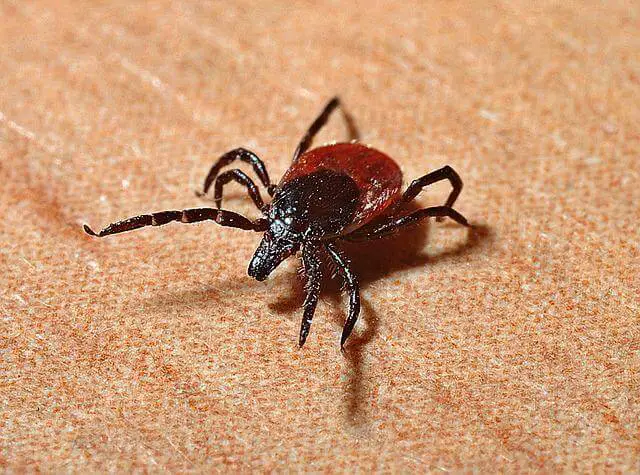Ticks & Cats: How To Spot, Prevent & Eliminate Ticks
23.04.2022.
Unfortunately, our beloved cats can get infected with parasites. What's even worse, there are internal and external parasites. The good news is that cats are very strong, and many internal parasites that are very dangerous for dogs might not affect cats in the same way. However, ticks are not like that. These topical parasites can transmit dangerous diseases that can result in death. Here's what cat owners should know about ticks and their cats.
What are cat ticks?
These creepy crawlies that drink blood can best be described as spider-like and egg-shaped. They have eight legs and range in length from 1mm to 1cm. Ticks in their adult stages resemble tiny spiders.
Ticks can be discovered even in your garden if your home is in an area where there are a lot of animals. However, they are most common in wooded, grassland, and warm environments. If you live close to areas where loads of deer, sheep, hedgehogs, or rabbits roam freely, your cat is more likely to encounter these pests.
RELATED: The 4 Most Common Type Of Cancer in Cats & Their Treatment
Ticks are most active during spring and fall, but they can be found all year round.
Rather than flying or jumping, ticks climb or drop onto your cat's coat as you brush past the region where they are waiting for a host.
How can I tell if my cat is infested with ticks?
Ticks are easily spotted since they are large enough to be seen. Check for lumps and bumps on your cat's body each evening when they return home for meals. An attached tick on your cat's skin will appear as a little lump.

Cats' heads, necks, ears, and feet are common places ticks like to attach themselves. Regular brushing also aids in their removal.
According to the age of the tick, its length might range from 1 millimeter to 1 centimeter. They resemble tiny spiders with egg-shaped bodies, and they come in various colors. As blood fills this body, the tick expands and changes color.
Safe tick removal
Ticks on cats can transmit diseases, so it's critical to eliminate any that land on your cat as fast as possible. The danger of contracting a disease is significantly reduced if the tick is quickly removed.
RELATED: FIV in Cats: Infection, Treatment & Prevention
As you remove the tick, make sure not to compress the tick's body. Make sure you remove the whole tick and try not to break off its head and leave it inside your cat's skin. It is possible to infect your cat by squeezing a tick's body and causing it to regurgitate the blood back into your pet.
The best and safest way to eliminate them is with special tweezers you can find in pet shops. These tick-removal tools make this process simpler. Consult with your veterinarian if you need assistance.

Importance of preventing ticks on cats
Dogs are more at risk than cats for transmission of diseases carried by ticks. They eat by biting and savoring their prey's blood. This could take a couple of days. After the tick has had its fill, it will simply detach itself and move on.
Lyme disease and bobcat fever can be transmitted by cat ticks. However, these infections are extremely rare in cats. An effective tick treatment should be used if ticks are common near your home.
RELATED: Feline Leukemia Virus (FeLV): Information, Spreading & Treatment
Diseases ticks carry
Tick-borne infections, as previously stated, are the primary cause of concern. Tick-borne diseases that every cat owner should be aware of are listed below.
Bobcat fever in cats (Cytauxzoonosis).
Your cat may not display any visible signs of ticks because tick bites don't usually hurt. However, a disease known as cytauxzoonosis, or bobcat fever, can be transmitted by a single bite from a carrier tick. Infectious to cats, bobcat fever is transmitted by the Lone Star tick. Bobcat fever is widely regarded as the most dangerous tick-borne disease to cats. Its symptoms include:
- High fever
- Lethargy
- Anorexia or a lack of appetite
- Breathing issues
- Jaundice or yellowing of the gums and other tissues
Bobcat fever can be life-threatening, affecting numerous organ systems and resulting in a state of unconsciousness or worse. It is frequently lethal within a week of the onset of symptoms in cats, even with vigorous medical therapy.
Lyme disease
Lyme disease is the most prevalent tick-borne illness, so it is no surprise it can affect cats, although it is more common in humans and dogs. You should keep an eye out for the following indicators of Lyme disease in your cat:
- Joint pain
- Stiffness
- Arching of the back
- Touch sensitivity
- Swollen lymph nodes
- Fever
- Loss of appetite

Ehrlichiosis
Even though cats aren't immune to it, dogs are more commonly infected with ehrlichiosis, another common tick-borne bacterial disease. Your cat will most likely exhibit the following symptoms of ehrlichiosis if infected:
- Fever
- Anemia
- Lethargy
- Anorexia
RELATED: Roundworms in Cats: Symptoms, Infection & Treatment
Anaplasmosis
Ticks can transmit anaplasmosis, another bacterial disease, to their prey. Anaplasmosis is most commonly found in the Northeast, where it is most contagious in the spring, summer, and fall. Anaplasmosis is transmitted to the cat within 24–48 hours of the tick attached to the animal. Among the many signs of feline anaplasmosis are:
- Lethargy
- Appetite loss
- Fever
How to keep ticks off cats
There are several diseases that can be transmitted to cats by ticks. Cats can remain tick-free by utilizing preventative products that are long-lasting and easy to administer. Ticks cannot bite and spread disease if they are repelled, so look for a repellent that kills and repels ticks on contact.
World Cat Finder Team







Share